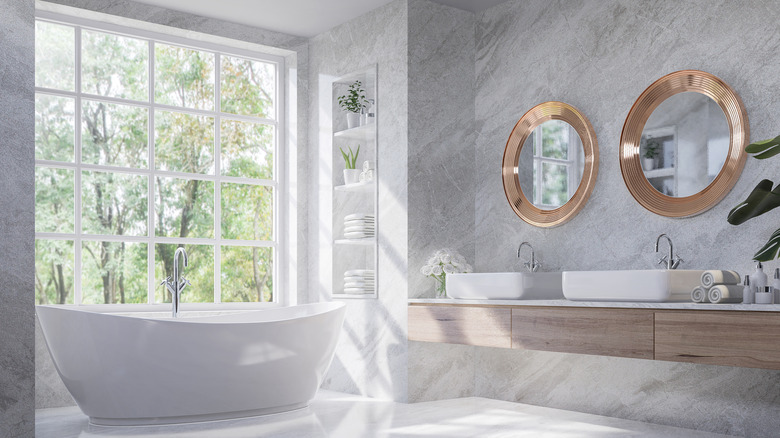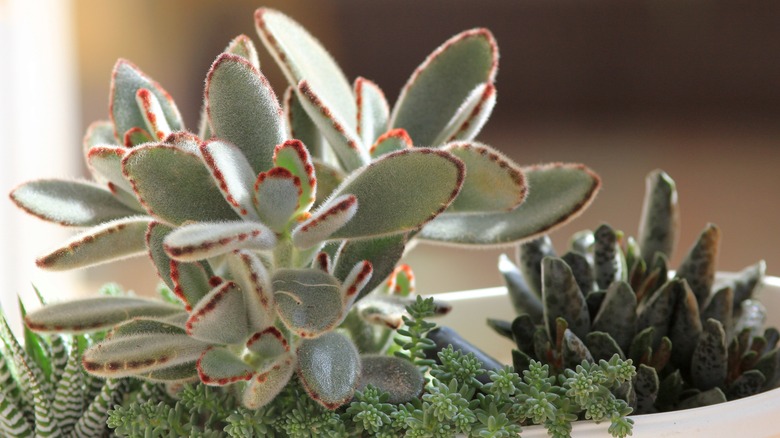The Low-Maintenance Succulent That Will Thrive In Your Bathroom
Although many houseplants are perfect for growing indoors, not all of them are ideal for a bathroom space. Due to the room's commonly high levels of moisture and low amount of space, only certain plants will be suitable for this area of the home. If you're looking for a plant that will improve the atmosphere in your bathroom, the panda plant (Kalanchoe tomentosa) is well worth your consideration. This perennial succulent has beautiful fuzzy leaves with silverish hues and tends to be pretty small, reaching a height of no more than 18 inches (46cm).
Because this plant needs plenty of moisture, the bathroom is the ideal space for it. The plant needs a humidity of 50 to 60%, so it's best to place it in this area of the home to keep it healthy and ensure it remains soft to the touch. You may want to use a hygrometer to check the humidity in your bathroom and ensure it's ideal for growing a panda plant. Keep in mind that the panda plant also needs plenty of sunlight as well. This means the plant should only be grown in a well-lit bathroom that gets plenty of natural light.
Growing a panda plant in your bathroom
Remember that while it's fairly easy to care for a panda plant, it requires certain conditions to grow well. Besides plenty of humidity and sunlight, ideally, that sunlight should be bright indirect sunlight but it can withstand some direct sun as well. Be aware that your panda plant may have stunted growth in the summer months since they tend to go dormant then, so you should water it a bit less during this season.
Also, while panda plants love humidity, too much can be detrimental to their health. You may find that your plant gets root rot disease or doesn't grow its best if the humidity is too high. You may want to use a dehumidifier or naturally dehumidify your home with a few simple tricks to maintain the perfect humidity level in your bathroom. Overwatering is also a problem. Don't allow the soil to get too wet or you may find that the plant becomes translucent and overly soft to the touch. If it does, you may need to cut off any rot that's present and replant the panda plant in dry soil to ensure it stays healthy.


